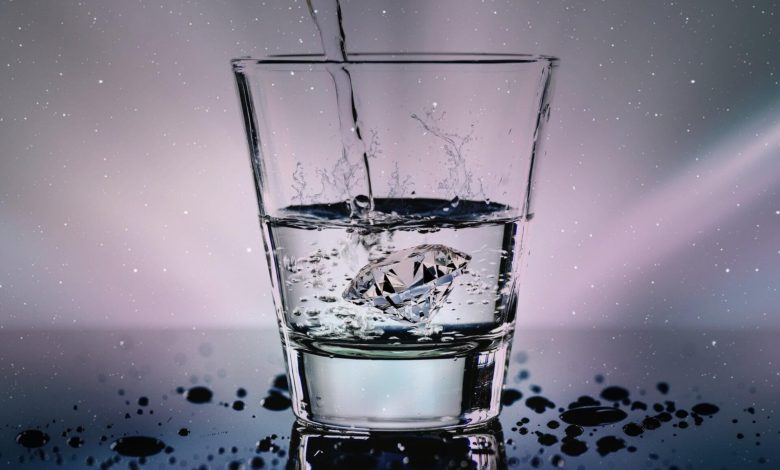
In a typical drinking water treatment plant, the water is distributed after going through a series of stages. First, coagulants (coagulants) are added to the water. These chemicals allow the accumulation of residues that cloud the water and spoil its taste. Then, the water is transferred to large tanks to rest for a while and the sediments go to the bottom. Purified water is passed through membranes that filter smaller contaminants. In the disinfection phase, harmful bacteria and viruses are killed by chemicals or ultraviolet light and drinking water is ready for distribution.
Technologies Used in Water Treatment Systems
However, as infrastructure revisions, qualified repairs or renewal of distribution lines cannot be achieved immediately, water can be contaminated again. In addition, although today’s technology can remove most contaminants such as microbes, arsenic, nitrates and lead, there are some substances that are very difficult to degrade or convert, such as various industrial chemicals called PFA (fuel waste). Some researchers are developing new technologies to deal with new pollutants that are seen as potentially harmful, while others are devising new approaches that are not affected by existing infrastructure or clean pollutants at source.
Various innovations are being tried in basic water treatment systems for both tap water and bottled water. Some chemicals used can trigger reactions that break down toxic organic molecules into less harmful particles. Ion exchange systems, which remove pollutants with electrical charges, can remove magnesium or calcium ions that increase the “hardness” of the water, and remove nitrates from fertilizers as well as heavy metals such as lead and arsenic. Cities use these technologies together or separately by prioritizing treatment components according to the chemical properties of local waters.
In the treatment process of some water treatment systems, technologies such as “reverse osmosis” are used that pass the water through a membrane with “selective permeability” and clean almost everything in the water. Reverse osmosis speeds up the process by reducing the chemicals added to the water and the number of treatments. However, it is expensive to install and operate. The use of private wells and water resources (which are used, for example, with all the substances they contain in agriculture), on the other hand, is often excluded from any treatment and control.
Unavoidable Hazards
It is assumed that water flowing from taps in kitchens or bottled water from markets is clean and safe drinking water. While this is generally true, water experts continue to seek and develop better cleaning techniques in response to the many possible contaminants listed below:
1) Microbes
Poorly treated water can be full of harmful bacteria and viruses. For this reason, since the early 1900s, cities started to disinfect drinking water with chlorine. The result was a rapid decline in waterborne diseases such as cholera and typhoid. Typhoid fever, caused by a type of Salmonella bacterium, occurred at one in every thousand people in 1900, but by 2006, this rate fell to one in a million.
2) Disinfection By-Products
Chlorine and bromine can kill most microbes in water. However, these disinfectants can also react with other chemicals in the water, resulting in new and toxic by-products such as chloroform affecting the kidneys, liver and brain.
3) Industrial Chemicals
Many companies use perfluorinated (PFC) compounds in their products ranging from anti-stick coatings (such as Teflon) to fire fighting foams. These very common chemicals are difficult to clean and monitor from drinking water. These pollutants, which have super strong chemical bonds between carbon and fluorine atoms, do not naturally degrade in the environment. Water treatment plants are not designed to clean them either. Studies have linked PFCs with a high risk of certain cancers, learning problems, growth deficits, and fertility problems. Jamie De Witt, a toxicologist at the University of East Carolina, says that today there are nearly 5,000 different PFCs, of which only a few have been studied. Because chemical companies do not have to report these chemicals.
4) Arsenic
Naturally occurring arsenic often poses a danger to those who take drinking water from their own private wells or sources instead of the city’s water system. In addition, arsenic used in agriculture or mining is mixed with groundwater. Exposure to high levels of this element leads to skin, bladder and lung cancer. It also affects intelligence and can trigger birth defects.
5) Nitrates
Commonly used as fertilizers for plants, nitrates are released into the water with rains. Nitrates can prevent red blood cells from carrying enough oxygen. Although the law controls factories for nitrates, the pollution from farms (not forgetting the heavily used pesticides here) continues.
6) Lead
Lead pipes are still in use and provide tap water to millions of people around the world. Lead can get into acidic or corrosive waters from these old plumbing pipes.





